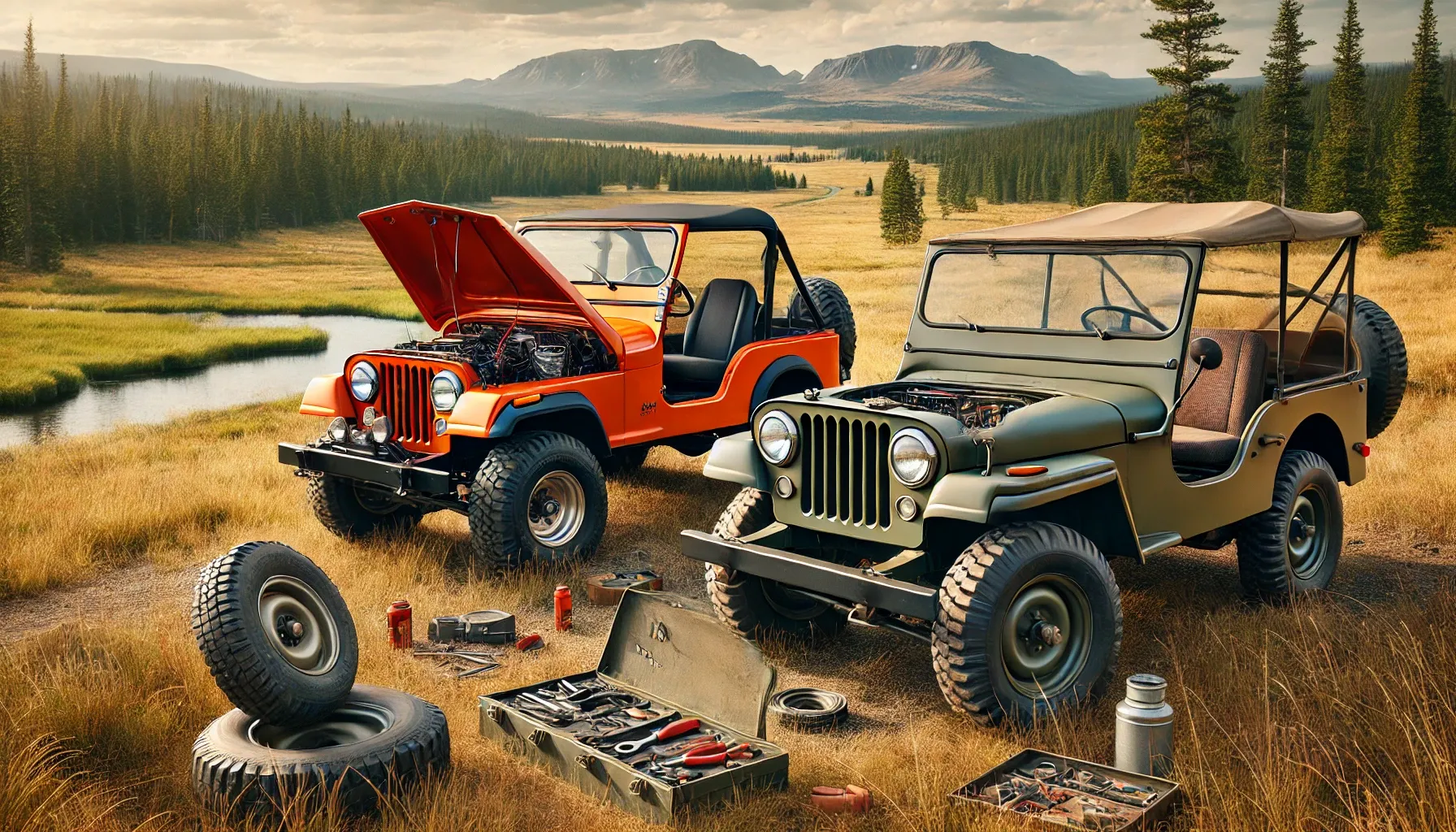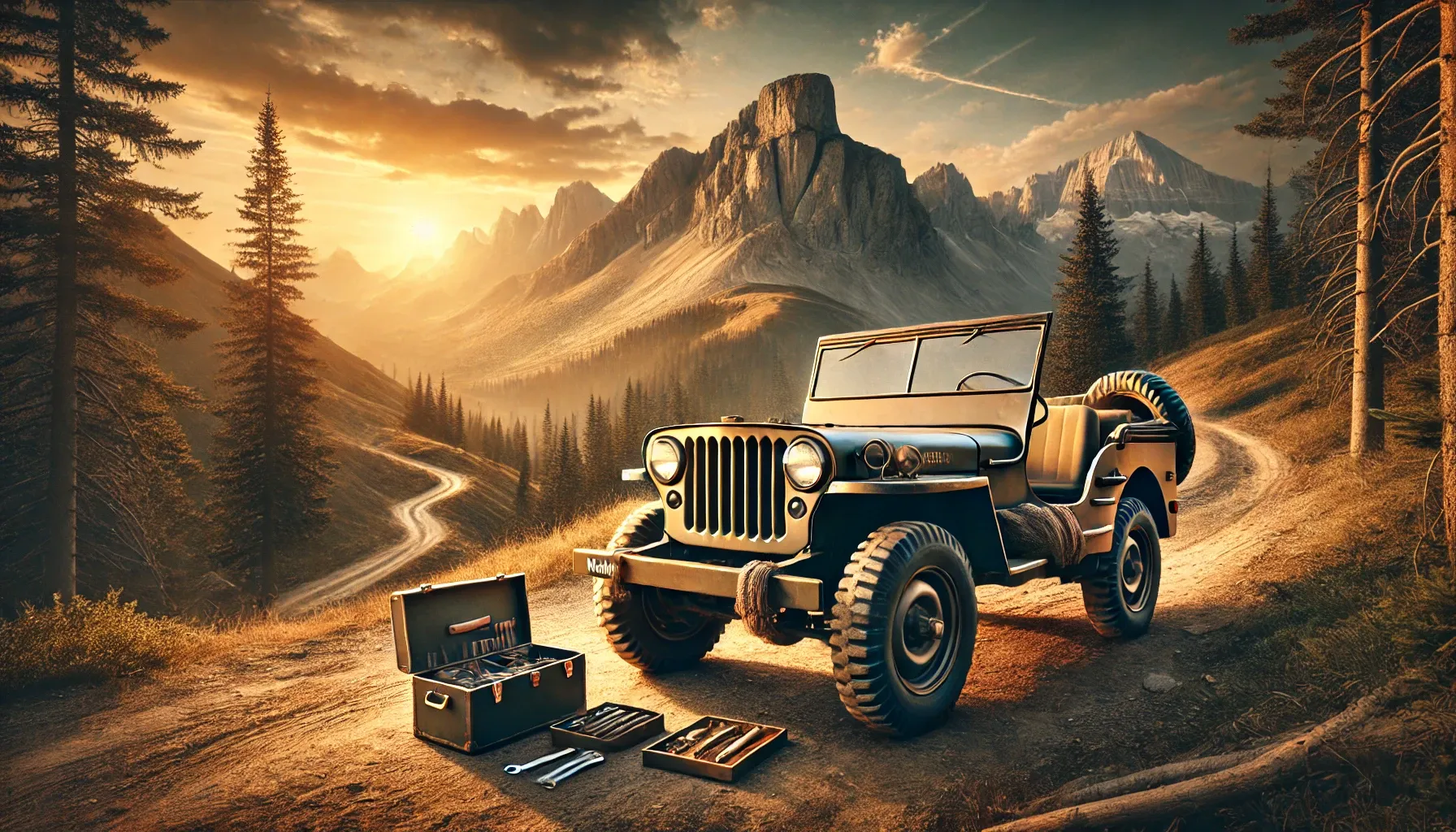
Date Published
The Heart of a Classic: Restoring Vintage Jeeps
Few vehicles on the road—past or present—can match the iconic status of a vintage Jeep. From the war-tested Willys MB to the beloved CJ series, Jeeps have long inspired a special kind of devotion. Maybe it's the rugged outline, the bare-bones interior that demands practical ingenuity, or the storied history of conquering battlefields and backwoods alike. Whatever the reason, there's no question that classic Jeeps have a character all their own—and restoring one is a labor of love that rewards patience, skill, and passion. In this article, we'll delve into the allure of vintage Jeeps, key considerations before taking on a restoration project, and the steps you can expect along the path of returning these four-wheeled legends to their former glory.
Understanding the Appeal of Vintage Jeeps
When it comes to nostalgia on four wheels, vintage Jeeps stand in a class by themselves. Perhaps more than any other off-road vehicle, the old-school Jeep embodies adventure, grit, and a do-it-yourself spirit. These machines were built to go anywhere and do anything, from plowing fields to crossing hostile terrain. That ethos carries over to modern enthusiasts who find that beneath the rust and faded paint lies a mechanical simplicity perfect for a restorer's eager hands.
Moreover, classic Jeeps often come with stories embedded in their metal frames—war-time service, farm duties, or decades of backwoods explorations. Collectors value them for their historically significant DNA and straightforward engineering. Many older Jeeps feature simple, robust four-cylinder engines, typically paired with manual transmissions and minimal electronics. This relative lack of complexity, compared to modern SUVs, makes them both easier and more challenging to restore. You won't need an advanced computer diagnostic tool to track problems, but you may have to learn the nuances of vacuum lines, carburetors, or mechanical linkages that have long vanished from newer vehicles.
The emotional appeal is undeniable: there's a unique thrill in bringing an antique piece of American automotive history back to life. It's about honoring an era when automobiles were mechanical marvels first and foremost, instead of rolling software platforms. You develop a reverence for the people who designed and built these rigs—people whose philosophy was "get it done, no matter what."
Choosing the Right Jeep to Restore
Selecting a classic Jeep for your restoration project starts with understanding your goals and your budget. If you're new to restoration, an entry-level Jeep CJ might be a better choice than an ultra-rare Willys MB or a first-generation CJ-2A that may require hunting down elusive parts. On the other hand, if historical authenticity is paramount, searching for a WWII-era model with most of its original components intact might be worth the extra time and expense.
Even among seemingly similar models, details can differ dramatically. For instance, a 1970s CJ-5 might have different mechanical components, emission controls, or body styles than one from the mid-1960s. It's wise to research which years are known for reliability or potential pitfalls like frame rust or rare drivetrain components. Availability of replacement parts can vary as well: while the CJ-7 is generally easy to find replacement body panels for, early CJ-2As sometimes require serious hunting or custom fabrication. Taking time up front to research parts availability, typical problem areas, and the market value of fully restored models will help you choose wisely.

Also consider how "original" you want your final result to be. Purists strive for period-correct restorations, going to great lengths to match original paint codes, use only OEM components, and preserve or replicate factory-correct details like seat upholstery or dashboard gauges. Others opt for restomods—blending classic style with modern conveniences such as updated brakes, fuel injection, power steering, or improved off-road suspension. Defining your vision at the outset will guide your decisions on selecting and restoring your Jeep.
Assessing Condition and Planning Your Restoration
Once you've found a Jeep that fits your vision, the next step is a comprehensive evaluation. This involves a detailed inspection that can uncover problems lurking behind peeling paint or hidden under accumulated grime. Bring a flashlight, a magnet (to detect body filler), and a healthy dose of curiosity. Key areas to inspect include the frame, floor pans, body mounts, and around the windshield frame—all common spots for rust. If you're unfamiliar with diagnosing mechanical issues, consider hiring a professional inspector or a mechanic with experience in older Jeeps.
Evaluate the engine, transmission, axles, and driveline for signs of leaks, unusual noises, or excessive wear. Check the steering components and suspension bushings, which can be prone to slop or deterioration in older models. Document everything that needs attention—from minor cosmetic flaws to major mechanical concerns—and create a realistic budget that factors in labor, parts, and potential surprises that inevitably emerge mid-restoration.
Planning is your best ally in keeping the project manageable and cost-effective. Whether you're doing most of the work yourself or working with a specialized shop, map out each stage of the build, from disassembly and parts cleanup to engine rebuilding and final paint. Organizing your approach helps ensure you don't overlook crucial steps and helps spread out expenses over time. Plus, a clear strategy can keep your morale high when the process gets frustrating—because trust me, there will be moments when you question your choices.
The Restoration Process: Step by Step
1. Disassembly: The first major milestone is safely and methodically taking the Jeep apart. Label everything—use zip-top bags for nuts and bolts, add notes to wiring connections, and photograph assemblies before dismantling them. This is not the time to rely on your memory. You'll thank yourself later when it's time to reassemble.
2. Frame and Body Work: With the Jeep stripped down, you'll get a clear look at the chassis. If the frame is structurally compromised by rust or cracks, you may need to weld in new steel or find a donor frame in better shape. Once repaired and reinforced, the frame can be cleaned, sandblasted, and treated with rust-proof coatings. The same goes for the body. Some Jeep owners opt for an aftermarket tub if the original is beyond salvaging—though in many cases, patch panels and skilled sheet metal work can bring it back to life.
3. Drivetrain Overhaul: Rebuilding or replacing the engine is one of the most rewarding parts of the process. Whether you're working with a legendary Go-Devil or an F-head Hurricane, you'll appreciate the simplicity and durability of these older designs. Typically, you'll want new gaskets, rings, bearings, and seals, as well as machine work if the block or head shows significant wear. While you're at it, inspect and refresh the transmission, transfer case, and differentials. Replacing worn bearings and seals, and ensuring proper gear mesh, is essential for reliable performance.
4. Suspension and Steering: Classic Jeeps often relied on leaf-spring suspensions, which provide a rugged ride but can wear over time. Check for cracked or fatigued leaf springs and worn bushings. Upgrading to slightly more modern components, like greaseable shackles or improved dampers, can help maintain that vintage feel while improving ride comfort. Steering components—especially recirculating-ball setups—may need new bearings and seals to eliminate excessive play.
5. Electrical and Fuel Systems: Original wiring harnesses can be brittle and unsafe. Replacing them with either a new factory-replica harness or a modern upgrade can prevent headaches and reduce fire hazards. Similarly, thoroughly clean or replace the fuel tank, lines, and carburetor (if still using one) to ensure a reliable fuel system.
6. Finishing Touches: Once the mechanical systems are complete and tested, it's time for paint, interior details, weather seals, and small trims that bring everything together. Many restorers choose factory paint colors like Olive Drab, Normandy Blue, or President Red for that period-correct vibe. Seating and dashboard treatments can range from spartan and utilitarian to tastefully modern—what you choose will depend on your restoration philosophy.
Sourcing Parts and Dealing with Challenges
One of the biggest hurdles in restoring vintage Jeeps is finding high-quality replacement parts. Fortunately, a thriving community of Jeep enthusiasts and specialized suppliers keep many reproduction and even NOS (new old stock) parts in circulation. Online forums, Jeep clubs, and swap meets are also valuable resources for tracking down elusive components. Don't be afraid to ask questions or seek advice; the Jeep community is famously supportive and knowledgeable.

However, be prepared for surprises when dealing with older vehicles. Rust damage can be more extensive than it appears. A seemingly small engine knock could signal deeper issues that require major machine work. Parts that fit one year's model perfectly may not align with subtle variations in a similar year's production run. Patience is key, along with a contingency budget. If you plan for the possibility of snags—both financial and emotional—you'll be better equipped to weather them.
The Payoff: Owning a Piece of History
Completing a vintage Jeep restoration is an intensely satisfying accomplishment. Every curve of the fender and every mechanical roar of that rebuilt engine becomes a testament to your perseverance. More than just a vehicle, a restored Jeep is a piece of rolling history, embodying decades of adventure and innovation. Taking it out for that first spin—especially off-road where it truly belongs—feels like stepping back in time. It's a living reminder that sometimes simpler is better, and that grit and mechanical know-how can still command respect in an era saturated with technology.
Beyond personal satisfaction, vintage Jeeps serve as conversation-starters and community-builders. You might find yourself fielding questions from curious onlookers in parking lots or forging friendships at Jeep meets and car shows. There's a unique camaraderie among people who appreciate classics, and by joining their ranks, you become a caretaker of Jeep's venerable heritage.
Conclusion
Restoring a vintage Jeep is much more than a mechanical endeavor—it's a journey into automotive history and personal discovery. It demands that you roll up your sleeves and dive into the intricacies of hand-tooled metal, archaic drivetrains, and timeless design. Along the way, you'll learn patience, problem-solving, and the sheer joy of coaxing a piece of history back onto the road (or trail). Whether you opt for a meticulous restoration or a tasteful blending old and new, your reward will be a vehicle that's as much an extension of yourself as it is a testament to Jeep's unbreakable spirit.
After all, once you've driven a vintage Jeep, you realize that it's more than steel and bolts. It's an entire legacy of exploration, adaptability, and rugged determination. That's the real heart of a classic—when you take the driver's seat, you become part of a storied lineage that has shaped the history of off-road travel and American automotive design. So if you're ready for a project that tests your mettle and rewards you in ways you can hardly imagine, grab a set of wrenches, find that well-worn Willys or CJ, and start turning it back into the legend it was meant to be. A classic Jeep may not be the quickest or flashiest ride, but it carries within its bones the timeless spirit of freedom and adventure—a spirit that will spark your imagination every time you fire up that engine.